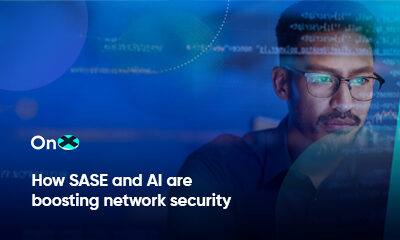
Zero trust is a strategic framework every company can strive to implement that will strengthen enterprise security systems. The basics of zero trust are foundational and vital to the continued defense of your digital estate.
A crucial part of a successful cybersecurity strategy is determining where to place your organization’s focus. A good starting place is defining what precisely you are attempting to secure—your computer systems, user identities, corporate devices, information system processes, or sensitive data. Each of these areas requires different tools or solutions, but all are important and should not be overlooked.
From there, your security team can start on the basics of zero trust and enhance enterprise security. The main goal is to secure data by restricting access, segmenting networks, implementing controls on devices and applications, and managing identities and permissions.
Zero trust secures your most valuable asset, your data
In the current threat landscape, one of the most significant risks comes from cybercriminals trying to gain access to sensitive data and lock you out of your systems, demanding a ransom or extorting you with the threat of releasing private or sensitive organizational data. Zero trust in the enterprise security realm marks a shift from “trusted networks” to “least privileged access.” This principle states that no user, network, or device is ever implicitly trusted.
All network traffic, identities, devices, and applications must be explicitly verified, and data must be encrypted at rest and in transit.
The prevalence of cyberattacks necessitates monitoring, restricting, and verifying access to your company’s most valuable asset: data. Cybersecurity professionals often do a lot to secure a device or system. However, the real target of cyber defense is sensitive data. The device is disposable as long as the data is securely encrypted.
Read more: Secure your organization’s data by implementing zero trust architecture
How does zero trust work with a data-first security focus?
Data-directed security allows a cybersecurity team to leverage zero trust to lower the risk of a data breach and reduce the attack surface. Unfortunately, the nightly news is littered with stories of organizations that have failed to implement adequate and often basic enterprise security controls. The good news is that in four easy-to-understand steps, your organization can begin to implement the zero-trust framework. The steps follow NIST’s outline of the zero trust architecture as recommended by CISA.
Learn more: Building a culture of cybersecurity awareness
1. Discover, classify, and label all sensitive data. Securing vulnerable data begins with locating it in your organization’s environment. Who has access to it? How is it used? How does it move and flow through the organization? Once your team can answer these questions, the process of applying zero trust principles begins.
2. Implement data resiliency. Data resiliency means applying encryption and creating redundancies that can be recovered during an attack, in the form of secure backups. AES encryption keeps user data confidential, both at rest (in a backup server) or in transit (from application to users). Encrypted data can be stolen at rest, but it cannot be accessed, mitigating the damage of a breach. Along with a 3-2-1 backup strategy (three copies of data, on two different mediums, with one copy off-site), encrypting sensitive data is a surefire way to defang bad actors.
3. Establish proper access controls. This process follows the principle of least privilege, a crucial part of zero trust. To access a system, a user must have at least two forms of authentication (multifactor authentication or MFA). MFA is essential in implementing user authentication. Rather than relying on just a single factor, like username and password, which is something someone knows, it adds a layer of protection by requiring more than one form of authentication before granting access to systems or data. The factors are something a user knows (a password or security question), something the user has (like a smartphone for a one-time token), or something biometric (such as a thumbprint scan or facial recognition).
4. Authenticate continuously. User activity must be constantly monitored and flagged for suspicious behavior. A lot of today’s zero trust security solutions harness advanced AI and machine learning algorithms to detect suspicious activity like an unusual login or location (if your organization is located in San Francisco, California, a login attempt from Atlanta, Georgia, at 4 am PST could be an attack). These automated tools respond in real time by requesting additional authentication or blocking access.
Also read: Three crucial benefits of zero trust architecture
Data protection mitigates elaborate cyberattacks
Protecting sensitive data is no longer optional. In many cases, it’s a legal requirement and necessary for your organization. Zero trust principles offer a roadmap for stronger defenses against relentless cyberattacks.
The four steps outlined in this post will reduce your attack surface and provide a plan to strengthening your overall security posture. OnX Canada has the expertise needed to get you started on a zero-trust journey for your enterprise data security needs.
Contact the OnX security team to learn more about zero trust in enterprise security.















